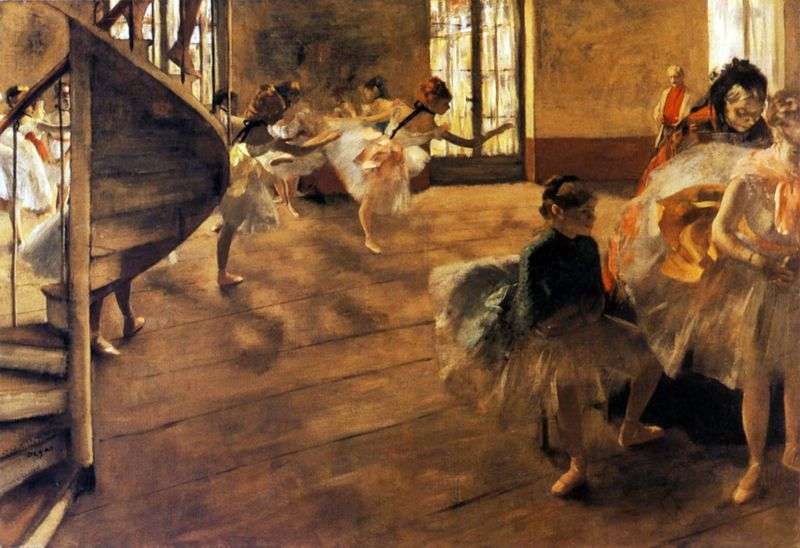
The uniqueness of the theme - Rehearsal - and the manner of writing give the picture a documentary, allowing the viewer to look into the secret life of the theater. As always, the composition of the picture is verified by Degas to the smallest detail. The central part of the space of the picture remains empty, - the figures of the rehearsals are collected in the upper left-hand corner, and to the right in the foreground we see two young ballerinas waiting for their turn, and the accompanying mother.
This painting shows the real life scenes of Ballet dancers. In terms of composition, Degas adopted a very bold way of expression, which ignored the complete and harmonious visual effect in Western traditional art. On the left side of this painting, the spiral staircase is only half depicted. Even for the dancer walking down the stairs, she only showed one foot. On the right side, the images of dancers are incomplete as well. The whole painting looks like a small part of another painting. This composition method of arbitrariness and contingency is called Keyhole aesthetics, which is like the occasional visual effect peeping from the small keyhole. It is just like a photo instantly taken, offering the viewers a more natural and real feeling.
Ballet Dancer on the Stage
The Ballet Class
The Absinthe Drinker